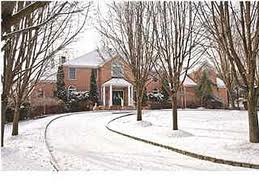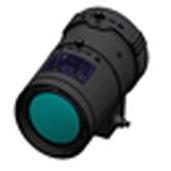Colts Neck Township CCTV & Security Cameras
Colts Neck Township in Monmouth County is a few miles from the Jersey Shore and less than an hour's drive from Manhattan. The reason for the town's name is lost in history, but some believe it refers to the shape of the spot where two streams meet. Colts Neck played an important role in Colonial America and was the site of a grand social experiment.

Anthropologists believe American Indians occupied the Colts Neck Area from about 6000 B.C. because of the presence of tools and other artifacts. The Unami Indians, also known as the Turtle Clan, were affiliated with the Lenni Lenape, a part of the Delaware confederation. The Unami called what is now New Jersey "Scheyichbi," and gathered near the present Obre Road in Colts Neck for socializing. Four Native American trails crossed through Colts Neck Township, connecting trading partners and villages. The Lenni Lenape abandoned the area for New York in the early 19th century because of disease and increasing hostilities between European settlers and tribal members.
The land changed hands several times between the French, Spanish, English and Dutch, with the Dutch holding sway from 1614 to 1664, but a patent was granted in 1665 that created the current Monmouth and Ocean counties. The earliest settlers lived in homes patterned after teepees, which evolved into log cabins and finally, in the early 18th century, English and Dutch building styles. Children attended school in the area as early as 1813, and a post office opened in 1824. The 1834 gazetteer noted Colts Neck contained "from fifteen to twenty dwellings, one tavern, two stores, three grist-mills and two saw-mills." In 1808 an Independent Methodist church was established, followed by a Reformed church in 1856 and a Roman Catholic church in 1871.
On June 28, 1778, 10,000 British forces under the command of Cornwallis, Clinton and Knyphausen battled 11,000 American forces commanded by George Washington and Charles Lee near present-day Colts Neck. British forces decamping from Philadelphia to station themselves in New York were met by Washington's troops. In a series of skirmishes, the American army managed to harass the British formations but not defeat them. An enduring story from the Battle of Monmouth is that of Molly Pitcher. Pitcher was a camp follower who brought water to thirsty troops. When her husband fell in the line of fire, she took his place at the cannon.
The land changed hands several times between the French, Spanish, English and Dutch, with the Dutch holding sway from 1614 to 1664, but a patent was granted in 1665 that created the current Monmouth and Ocean counties. The earliest settlers lived in homes patterned after teepees, which evolved into log cabins and finally, in the early 18th century, English and Dutch building styles. Children attended school in the area as early as 1813, and a post office opened in 1824. The 1834 gazetteer noted Colts Neck contained "from fifteen to twenty dwellings, one tavern, two stores, three grist-mills and two saw-mills." In 1808 an Independent Methodist church was established, followed by a Reformed church in 1856 and a Roman Catholic church in 1871.
On June 28, 1778, 10,000 British forces under the command of Cornwallis, Clinton and Knyphausen battled 11,000 American forces commanded by George Washington and Charles Lee near present-day Colts Neck. British forces decamping from Philadelphia to station themselves in New York were met by Washington's troops. In a series of skirmishes, the American army managed to harass the British formations but not defeat them. An enduring story from the Battle of Monmouth is that of Molly Pitcher. Pitcher was a camp follower who brought water to thirsty troops. When her husband fell in the line of fire, she took his place at the cannon.
Tamron to showcase new M13VG850IR, a 8-50 mm, F/1.6 telescopic vari-focal lens compatible with 3 mega-pixels
The S14 FlexMount offers the option to set up two hemispheric lens units simultaneously in order to completely cover two adjacent rooms with just one single S14D. When installed in a certain way, the S14D can also see around corners or secure indoor and outdoor areas at the same time.
the development of the Model M13VG850IR, a 8-50 mm, F/1.6 telescopic vari-focal lens compatible with 3 mega-pixels for high-image quality in the full visible and near-IR spectrums. The use of an aspherical element, XLD (Extra Low Dispersion)* lens, and advanced optical design technology delivers high image quality that is compatible with 3 mega-pixel cameras. This image quality is of a level that exceeds Full HD 1080p. Delivers F/1.6 (Wide) and F/2.0 (Tele) levels of brightness |
